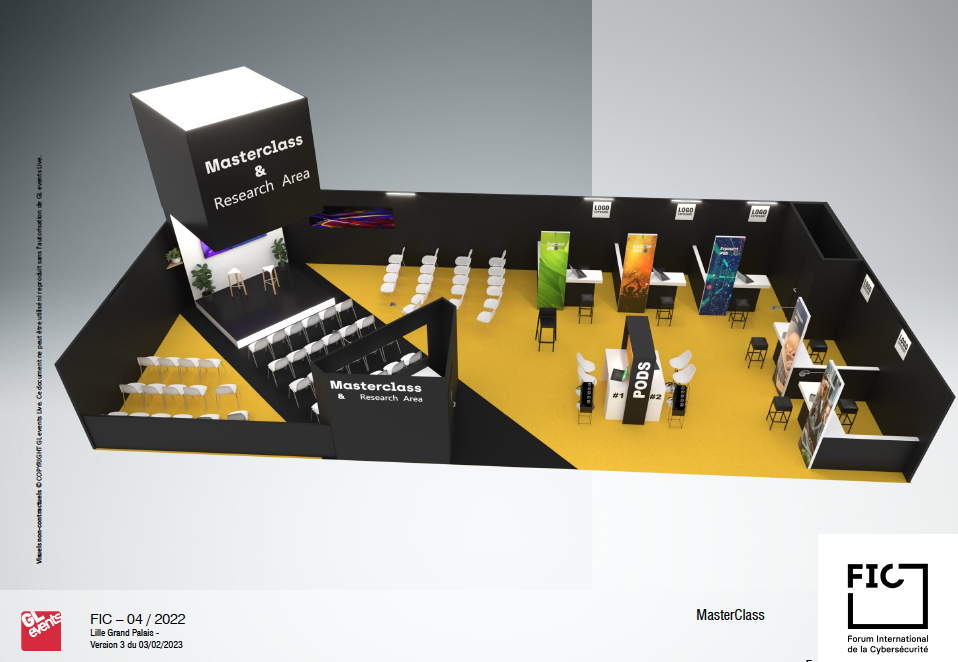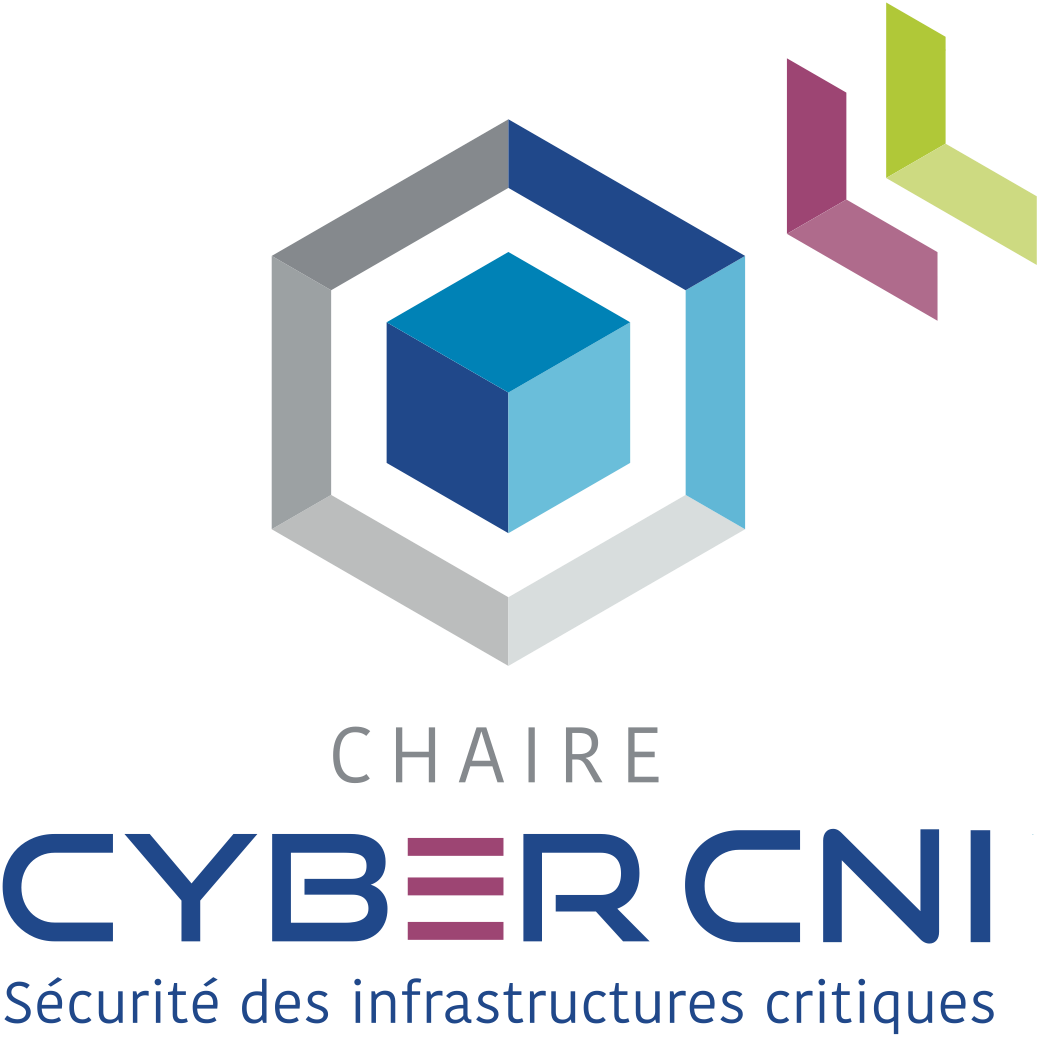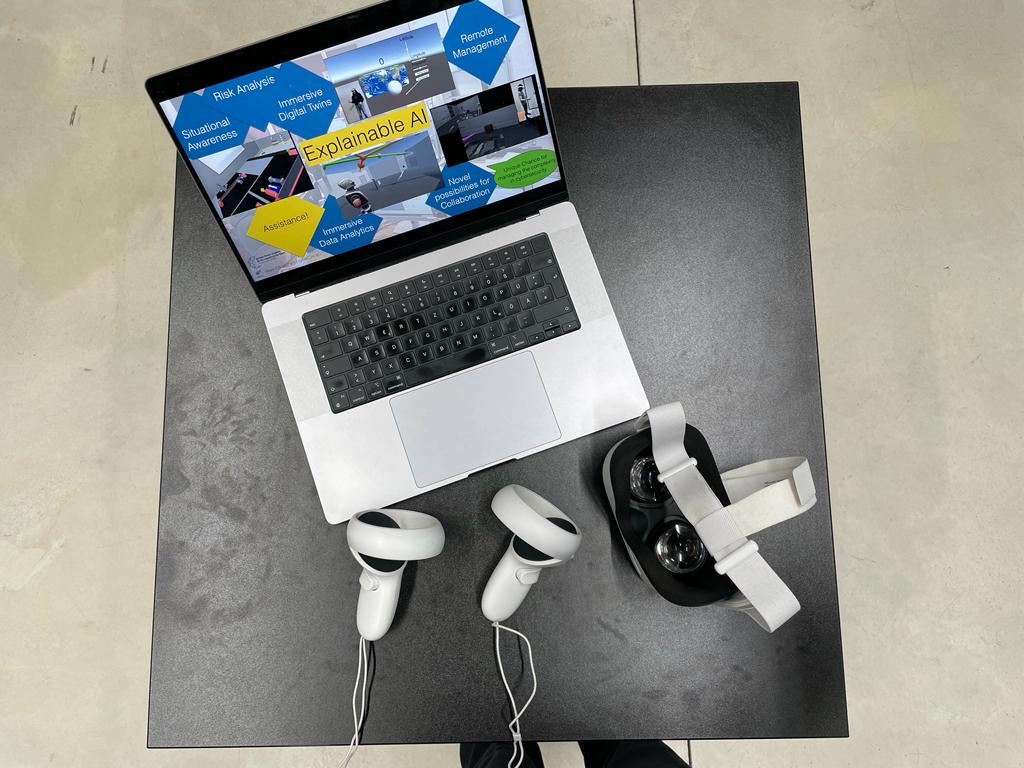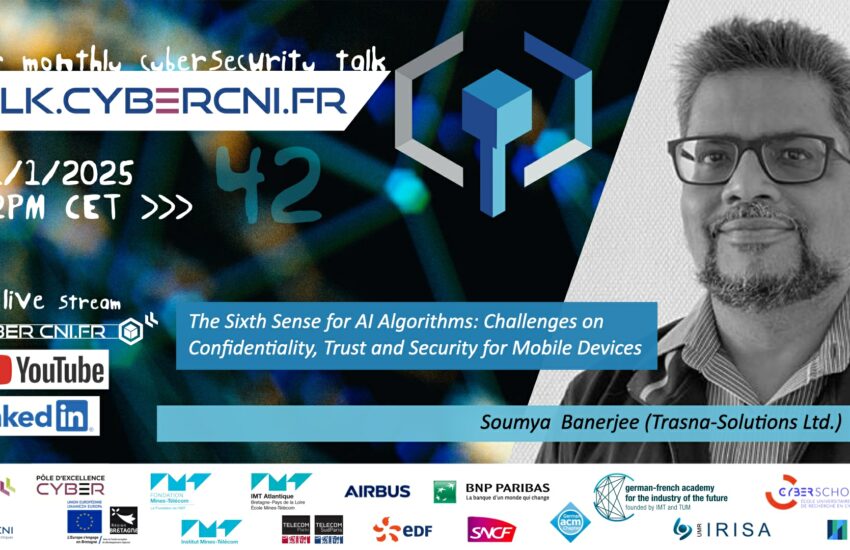[FIC2023] “The Metaverse – Risk or Chance: A Cybersecurity Perspective,” 5.4.2023, 16h30, CNRS area
We cordially invite you to meet us at the Forum International de la Cybersécurité in Lille on 5.4.2023 16h30, area of the Masterclasses and Research Presentations of the CNRS, for our session with our chairholder Marc-Oliver Pahl on “The Metaverse – Risk or Chance: a Cybersecurity Perspective”.
As in the past years, the chaire cyberCNI.fr will have a strong presence at the Forum International de la Cybersécurité (FIC 2023) in the Grand Palais at Lille. The goal of the chair is showcasing its works for attracting 2-3 additional industry partners.

Other interventions
- 5.4.2023 16h30, Area of the Masterclasses and Research Presentations of the CNRS
Marc-Oliver Pahl, “The Metaverse – Risk or Chance: a Cybersecurity Perspective” - 6.4.2023 14h00, Pavillon de la Région Bretagne F23, “Protection des infrastructures critiques : un sujet au cœur de l’actualité”
If you want to exchange with us, do not hesitate to contact us in advance to schedule a meeting!
Abstract
The Metaverse refers to a virtual world that is fully immersive and interactive, where users can interact with each other and with virtual objects and environments in a manner similar to the real world. The concept of the metaverse is often associated with virtual reality and augmented reality technologies, and is seen as a potential future extension of the internet.
Starting with the Oculus immersive headset, more and more companies started offering corresponding solutions. Besides this Virtual Reality, also Augmented Reality headsets such as the Microsoft hololens appeared. They all offer new interfaces between human users and the machines running the programs that orchestrate all aspects of our lives.
While the Metaverse concept is not new, advances in technology on the software and hardware side make the Metaverse an appealing place for innovation. With its immersive character, the Metaverse offers new kinds of interactions that are not limited by our physical surrounding. This is not limited to visuals but includes audio and tactile modalities.
So far, the main usage of the metaverse is training. Users are put in virtual, controlled scenarios to perform dedicated tasks. This concept is quite successful as it is resource efficient. An example are handling of machinery, exercising scenarios such as fire escapes, and so on.
In contrast to that, at the chair Cybersecurity for Critical Networked Infrastructures of IMT, we focus on professionally using the Metaverse for a collaborative online / live management of the cybersecurity of systems. More in detail, this talk is structured in two parts: 1) new applications for cybersecurity, and 2) new cybersecurity risks.
In the first part of the talk, I will present recent advances made towards developing Metaverse-based interfaces for cybersecurity management. A concrete example is distributed security experts that are connected to a joint Metaverse space, analyzing data as if they were physically present in a Security Operation Center. In addition, these experts have novel visualizations and thereby analysis capabilities at hand. The talk will showcase such functionalities.
Our Metaverse cybersecurity interface targets a broad range of users from cybersecurity experts to people that are not at home in the domain such as many C-level executives. The latter still often must take cybersecurity decisions as those can be highly affecting business processes. One of our goals is therefore, offering interfaces that can be used and understood simultaneously by a heterogeneous audience: the security expert can analyze live data better with peers while the C-level decider can better understand implications, e.g. by visualization of impacts using Digital Twins and Machine Learning.
We will see different interfaces and analytics capabilities. They are structured into realistic and non-realistic scenes. The former help visualizing concrete impacts close to monitored system data. The later help analyzing data by offering new access through new interfaces.
In the second part, the talk covers novel risks that emerge with the use of metaverse technology. The underlying scenario are again distributed users that interact on the same matter in real time. As using the Metaverse professionally typically results in remote management, typical threats of distributed systems occur. These include Man-in-the-Middle attacks, exfiltration of data, denial of service, and many more. At the same time, the medium also fosters certain attacks such as identity fraud.
This part will look at different threats and illustrate them. Also, possible mitigations will be laid out.
Finally, the talk will present current research challenges in the field, giving some insights in the level of maturity of the technology.
About the FIC
The International Cybersecurity Forum is Europe’s leading event on digital security and trust issues.
Its unique feature is to bring together the entire cybersecurity and “trusted digital” ecosystem: end customers, service providers, solution providers, consultants, law enforcement and government agencies, schools and universities…
Its mission is to respond to a double urgency :
- To face the operational challenges of cybersecurity
- To contribute to the construction of a digital future in line with European values and interests
The FIC is at the same time:
- An exhibition dedicated to meetings between end customers and solution and service providers
- A forum for exchange and reflection on the operational and strategic challenges of cybersecurity
About the chair Cybersecurity of Critical Networked Infrastructures (cyberCNI.fr)
The Cyber CNI Chair at IMT Atlantique does research, innovation, and teaching in the field of cybersecurity for critical networked infrastructures. Such infrastructures include industrial processes, financial systems, building automation, energy networks, water treatment plants, or transportation.
The chair covers the full stack from sensors and actuators and their signals over industrial control systems, distributed services at the edge or cloud, to user interfaces with collaborative Mixed Reality, and security policies. The chair currently hosts 9 PhD students, 4 PostDocs, 11 Professors, 1 engineer, and 1 internship student.
The chair runs a large testbed that enables applied research together with the industry partners. The industry partners of the current third funding round are Airbus, BNP Paribas, EDF, and SNCF. The chaire is located in Brittany, France. Brittany is the cybersecurity region number 1 in France. The chair Cyber CNI is strongly embedded in the cybersecurity ecosystem through its partnerships with the Pôle d’Excellence Cyber (PEC) and the Brittany Region.
- Season’s Greetings from the Chair Cyber CNI! - December 26, 2024
- 📢 La Chaire Cyber CNI et la Chaire Cyber Naval vous invitent à la demi-journée “L’IA à la croisée des chemins : Renforcer la sécurité ou donner du pouvoir aux cybermenaces ?” lors de l’European Cyber Week ! 🚀 - November 13, 2024
- Can You Spot Fake News? Test Your Skills with JudgeGPT! - November 8, 2024










